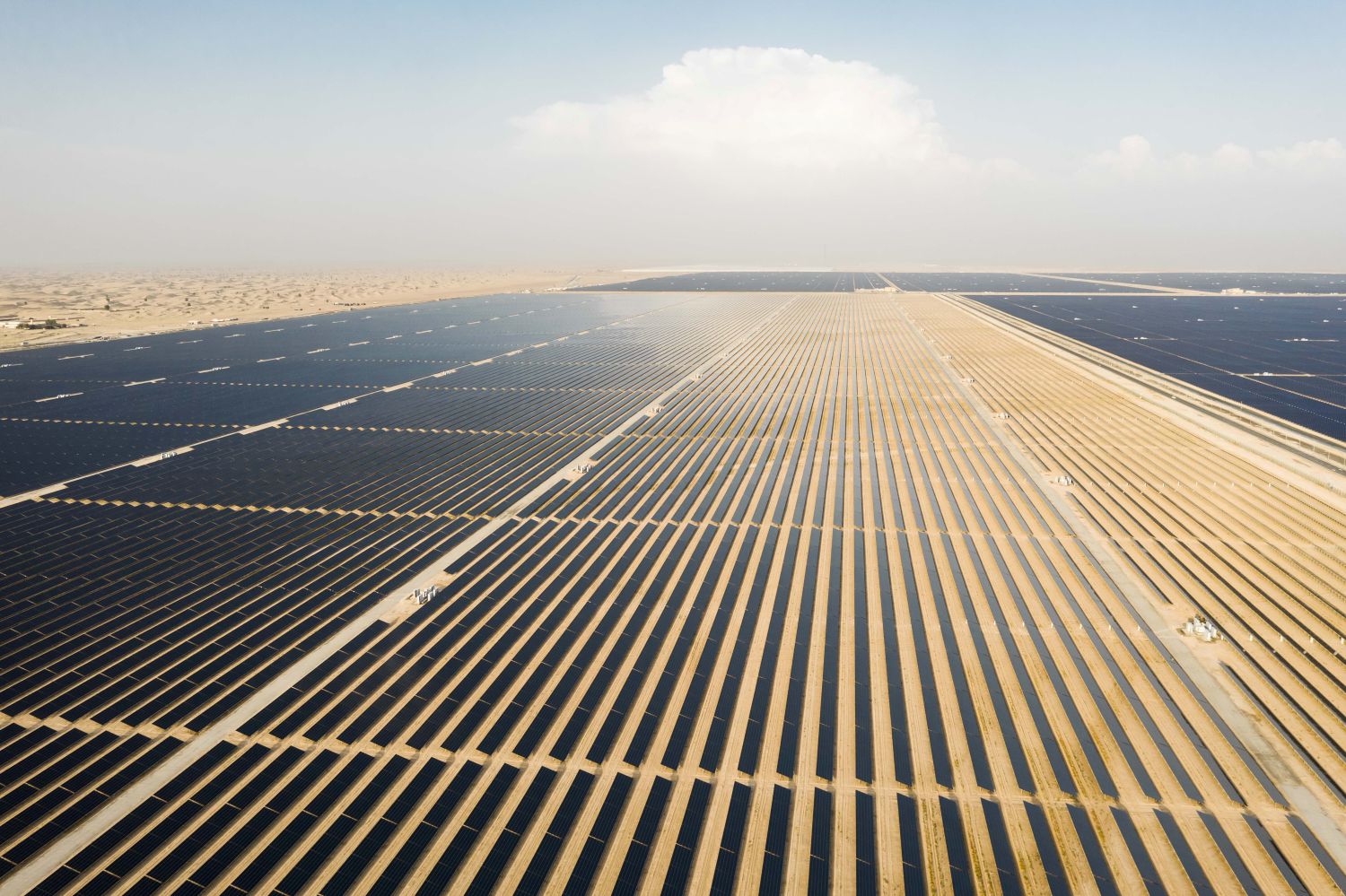The sun rises on a new Egypt as it powers the future with renewables
The recent completion of the 500MW Kom Ombo Solar Power Plant stands as a massive testament to Egypt's accelerating commitment to a sustainable energy future. This colossal facility, basking in the abundant desert sun, is not just a testament to engineering prowess - it’s a vibrant symbol of a nation rapidly re-calibrating its energy compass. As the largest standalone solar photovoltaic (PV) plant of its kind in Egypt, Kom Ombo signals a pivotal moment, but it's just one facet of a much broader, ambitious energy strategy, writes John Ridgeway.
Egypt, a land steeped in ancient history, is now writing a new chapter, one defined by megawatts and green electrons. The push for renewable energy in the Land of the Pharaohs is not just about environmental stewardship - it's a multifaceted response to rising energy demand, the imperative of energy security and a shrewd economic diversification play. This burgeoning green revolution in Egypt mirrors a global energy transition, albeit with its own unique challenges and opportunities, positioning the North African nation as a formidable player in the global renewable energy landscape.
The Kom Ombo Solar Power Plant, with its over one million photovoltaic panels, is designed to generate 560 MW of direct current (DC) power, translating to an alternating current (AC) capacity of 500 MW. Located strategically in the Aswan Governorate, a region blessed with some of the highest solar irradiance in the world, the plant is poised to deliver clean electricity to an estimated 256,000 Egyptian households annually. This translates into a significant reduction in carbon dioxide emissions – approximately 760,000 tons per year – a tangible contribution to mitigating climate change and improving air quality. Please note: The images used with this story are of similar projects in other regions.
The project's successful completion, spearheaded by China Energy Construction, underscores the power of international collaboration in driving the global energy transition. It also highlights the growing confidence of international investors and developers in Egypt's renewable energy market. While the 1.65 GW Benban Solar Park remains the largest solar complex in Egypt and indeed one of the biggest worldwide, Kom Ombo's emergence signifies a continued scaling up of utility-scale solar projects, demonstrating Egypt's commitment to capitalizing on its immense solar potential.
A holistic renewable energy strategy
Egypt's renewable energy ambitions extend far beyond the impressive solar fields of Kom Ombo and Benban. The nation is pursuing a comprehensive, diversified strategy that uses its abundant natural resources across various renewable energy technologies.
Egypt already boasts exceptional wind resources, particularly along the Gulf of Suez, making wind energy a crucial pillar of its renewable energy mix. The government has actively pursued and attracted significant investment in large-scale wind farms. Projects like the Red Sea Wind Energy Project, led by ENGIE, are set to become some of Africa's largest onshore wind farms. Additionally, ACWA Power, a key player in Egypt's renewable sector, has inked a massive $2.3 billion deal to develop a 2 GW wind farm, poised to be the country's largest, surpassing the existing 1.1 GW Suez facility.
These wind projects are not only boosting clean energy generation, but also creating substantial economic benefits, including job creation and the potential for significant savings on natural gas imports. Egypt's aim to source 42% of its electricity from renewables by 2030 relies heavily on scaling up its wind energy capacity, with plans to add 6.4 GW of new wind capacity by 2026 alone.
While not exactly a new frontier, hydroelectric power continues to be a vital component of Egypt's energy portfolio, primarily through the iconic High Dam and other barrages on the Nile River. With a current hydropower generation capacity of around 2,700 megawatts, hydro contributes a stable and emissions-free base load to the grid. While the potential for significant new large-scale hydropower projects may be limited due to existing infrastructure and water resource considerations, Egypt is exploring ways to optimise existing facilities and potentially integrate smaller-scale hydro solutions along its extensive canal and irrigation networks.
The dawn of green hydrogen
In addition and perhaps one of the most exciting and forward-looking aspects of Egypt's renewable energy strategy is its aggressive push into green hydrogen. Leveraging its vast solar and wind resources, Egypt aims to become a global hub for green hydrogen and its derivatives, such as green ammonia. The country has signed numerous Memoranda of Understanding (MoUs) with international partners to establish large-scale green hydrogen and green ammonia production facilities, particularly within the strategically important Suez Canal Economic Zone (SCZONE).
A groundbreaking $17 billion initiative is in the pipeline to establish the largest green hydrogen plant in the country, targeting 400,000 tons of liquefied hydrogen annually. This ambitious project, leveraging Egypt's abundant renewable energy resources, aims to produce hydrogen entirely from green sources, operating off the national grid and ultimately exporting pure liquid hydrogen to Europe. Egypt's Green Hydrogen Strategy, launched at COP27, outlines a roadmap to expand hydrogen production sevenfold by 2050, aiming to capture a significant share of the global hydrogen market. This represents a bold leap, positioning Egypt not just as an energy consumer, but as a potential global energy exporter in the clean energy era.

It must be noted that Egypt's renewable energy boom is not accidental - it's the product of deliberate policy and strategic foresight. The government's Integrated Sustainable Energy Strategy (ISES) 2035, recently accelerated to target 42% renewable energy in its electricity mix by 2030 (five years ahead of schedule), provides a clear roadmap.
Key policy drivers include a favourable investment climate, where Egypt has implemented legislative reforms and offers attractive incentives to draw in private sector investment, including land grants, tax exemptions and long-term power purchase agreements (PPAs) to mitigate market risk.
Recognising that a modern grid is essential for integrating intermittent renewable sources, Egypt is also heavily investing in upgrading its transmission and distribution networks, including new substations and control centres.
This is because Egypt actively seeks to become a regional energy hub, facilitating cross-border electricity trade and the export of renewable energy. Projects like the Egypt-Europe Electricity Interconnection Project (EuroAfrica Interconnector) linking Egypt's grid with Greece and Cyprus are crucial to this vision. There's also a concerted effort to increase local content in renewable energy projects, fostering domestic industries and creating jobs within Egypt.
Egypt in the international energy transition
However, Egypt's journey towards a renewable energy future is a microcosm of the global energy transition, reflecting both universal trends and unique regional nuances. Like many nations, Egypt is responding to the urgent need to reduce carbon emissions to combat climate change, aligning with international commitments such as the Paris Agreement.
Fortunately, the dramatic decline in the cost of solar PV and wind power globally has made these technologies economically competitive, even without subsidies, making them attractive for large-scale deployment. This cost-effectiveness is a major driver in Egypt's investment decisions.
Reducing reliance on volatile fossil fuel markets and diversifying energy sources are key drivers for many countries. Egypt, too, seeks to enhance its energy security by tapping into its abundant domestic renewable resources. Perhaps the most exciting however, is the global surge in interest in green hydrogen as a versatile clean fuel for hard-to-decarbonize sectors. This is keenly felt in Egypt, positioning it as a potential major producer and exporter.
Without doubt, Egypt's geographical location provides exceptional solar and wind resources, giving it a natural advantage compared to many other nations. But, attracting significant international investment, Egypt, as a developing economy, also faces challenges in financing the massive scale of infrastructure upgrades required for a comprehensive energy transition. This necessitates strong partnerships with multilateral development banks and private investors.
Furthermore, for green hydrogen production, which requires significant amounts of water for electrolysis, Egypt's water scarcity issues present a challenge that must be addressed through desalination or other sustainable water management strategies. And while pushing for renewables, Egypt still relies heavily on natural gas for its power generation. This means that the transition involves a delicate balancing act of phasing out fossil fuels while ensuring energy stability and affordability.
That said, the completion of the Kom Ombo Solar Power Plant is not an endpoint, but a powerful indicator of Egypt's unwavering resolve. The journey ahead will undoubtedly present challenges, from ensuring grid stability with increasing shares of intermittent renewables to securing consistent international financing and developing the necessary local technical expertise in areas like energy storage and smart grids.
However, the opportunities are immense. Egypt is strategically positioned to become a regional and potentially global leader in renewable energy. Its commitment to green hydrogen, coupled with its robust solar and wind pipeline, could transform it into a significant exporter of clean energy, bolstering its economy and contributing substantially to global decarbonisation efforts.
Additional Blogs

Are architects losing their influence in the digital era?
For decades, architects have been the central creative force in construction, shaping the buildings we see and the way projects are conceived, communicated and delivered. Their role has been...
Read moreWhy the word “Innovation” has lost its meaning in construction
“Innovation” has become one of the most overused terms in construction. It appears in the dozens of press releases we receive each day, conference talks and project reports, often without any real...
Read more

Retrofit fatigue and are we asking too much of old buildings?
As the world pushes toward net-zero emissions, the pressure to decarbonise our built environment is more intense than ever. Governments, developers and building owners are investing heavily in energy...
Read more